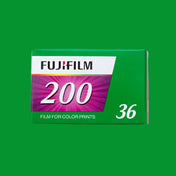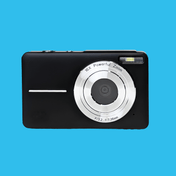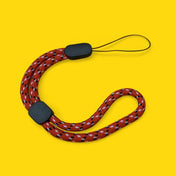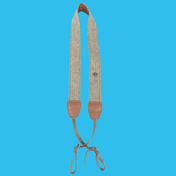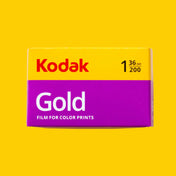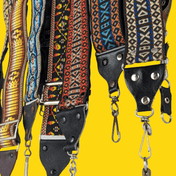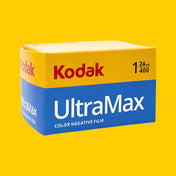Welcome to a beginner's guide on how to use a Single Lens Reflex (SLR) camera. SLR cameras are popular among photography enthusiasts for their versatility and control over image capture. In this article, we will explore the fundamentals of using an SLR camera and provide insights on maximising its potential.
Understanding SLR Cameras
2.1 What is an SLR Camera?An SLR camera is a type of camera that uses a mirror and prism system to allow the photographer to view the scene through the lens. This provides an accurate representation of the image that will be captured. Unlike point-and-shoot cameras, SLR cameras offer interchangeable lenses, giving photographers the flexibility to choose the most suitable lens for different situations.
2.2 Advantages of SLR CamerasSLR cameras offer several advantages, including:
- Enhanced image quality
- Manual control over settings
- Interchangeable lenses
- Advanced autofocus capabilities
- Ability to shoot in RAW format
- Flexibility in post-processing

Components of an SLR Camera
To better understand how to use an SLR camera, let's familiarise ourselves with its key components.
3.1 Lens
The lens is a crucial part of an SLR camera, responsible for focusing light onto the image sensor. Different lenses offer varying focal lengths and aperture sizes, allowing photographers to capture a wide range of subjects with different levels of depth of field.
3.2 Viewfinder
The viewfinder is the eyepiece through which you can see the scene and compose your shot. It provides a real-time optical view, which is especially helpful in bright light conditions when viewing the LCD screen becomes challenging.
3.3 Image Sensor
The image sensor is the electronic component that captures the light and converts it into a digital image. SLR cameras usually feature larger sensors compared to compact cameras, resulting in better image quality, improved dynamic range, and low-light performance.
3.4 Shutter
The shutter controls the duration of exposure, determining how long the image sensor is exposed to light. It helps in freezing fast-moving subjects or creating intentional motion blur.

3.5 Aperture
The aperture refers to the opening in the lens through which light enters the camera. It influences the depth of field and controls the amount of light reaching the image sensor. Understanding aperture is essential for achieving desired focus and background blur.
3.6 ISO
ISO measures the sensitivity of the image sensor to light. Adjusting the ISO allows you to capture images in different lighting conditions, balancing exposure with noise levels. Higher ISO values are useful in low-light situations but may introduce digital noise.
3.7 Exposure Metering
Exposure metering determines how the camera measures the available light to calculate the optimal exposure settings. Different metering modes, such as evaluative, spot, and centre-weighted, offer flexibility in capturing well-exposed images in various lighting situations.

Basic Settings and Controls
To start using an SLR camera effectively, familiarise yourself with the basic settings and controls.
4.1 Mode Dial
The mode dial allows you to select different shooting modes, including Auto, Program, Aperture Priority, Shutter Priority, and Manual. Each mode offers a different level of control over the camera settings, allowing you to adapt to various shooting scenarios.
4.2 Shutter Speed
Shutter speed refers to the length of time the shutter remains open. Adjusting the shutter speed helps control the amount of light entering the camera and determines whether moving subjects are frozen or blurred.
4.3 Aperture Value
The aperture value, also known as the f-stop, controls the size of the lens opening. It affects the depth of field, allowing you to create a shallow or extensive focus area.

4.4 ISO Sensitivity
ISO sensitivity determines how the image sensor responds to light. Adjusting the ISO allows you to capture images in different lighting conditions while considering the trade-off between noise and exposure.
4.5 White Balance
White balance ensures accurate colour reproduction by adjusting the camera's settings according to the colour temperature of the light source. It helps to eliminate unwanted colour casts in your images.
4.6 Autofocus
Most SLR cameras offer autofocus capabilities, allowing the camera to automatically focus on the subject. Learning about autofocus modes, focus points, and focus lock techniques helps in achieving sharp and well-focused images.
Understanding Exposure
5.1 The Exposure Triangle
The exposure triangle represents the relationship between aperture, shutter speed, and ISO sensitivity. Understanding this relationship helps you achieve balanced exposures in various lighting conditions.
5.2 Achieving Proper Exposure
Proper exposure is crucial for capturing well-balanced and visually appealing photographs. Techniques such as exposure compensation, bracketing, and histogram analysis assist in achieving optimal exposure levels.
5.3 Metering Modes
Different metering modes, such as evaluative, spot, and centre-weighted metering, help in accurately determining the exposure settings based on the scene's lighting conditions.
Advanced Techniques
Once you are comfortable with the basics, you can explore more advanced techniques to enhance your SLR photography.
6.1 Depth of Field
Understanding and manipulating depth of field allows you to create visually striking images with a selective focus. Controlling the aperture and focal length helps in achieving the desired depth of field effect.
6.2 Shutter Speed Techniques
Exploring long exposure techniques, freezing motion, and capturing light trails adds creativity to your photography. Understanding and controlling the shutter speed is essential in implementing these techniques effectively.
6.3 Creative Use of Aperture
Using different aperture settings creatively helps in achieving specific effects such as bokeh (blurred background), starbursts, and sunstars. Experimenting with different aperture values expands your creative possibilities.
6.4 Using Filters
Filters, such as polarizers, neutral density filters, and graduated filters, can significantly enhance your images. They help in reducing reflections, managing exposure in bright conditions, and balancing exposure in high-contrast scenes.
Composition and Framing
Understanding composition principles and framing techniques helps in creating visually appealing photographs.
7.1 Rule of Thirds
The rule of thirds involves dividing the frame into a 3x3 grid and placing key elements along the grid lines or at their intersections. This technique adds balance and interest to your images.
7.2 Leading Lines
Using leading lines, such as roads, paths, or natural elements, helps guide the viewer's attention towards the main subject, creating a sense of depth and visual flow.
7.3 Framing
Framing involves using elements in the scene, such as archways or branches, to frame the subject and draw attention to it. This technique adds depth and context to your images.
Post-Processing
8.1 RAW vs. JPEG
Understanding the difference between RAW and JPEG file formats helps you make informed decisions about post-processing. RAW files offer more flexibility in editing, while JPEG files are smaller and more accessible.
8.2 Editing Software
Choosing the right editing software, such as Adobe Lightroom or Capture One, allows you to enhance and fine-tune your images. Learning basic editing techniques helps in optimising exposure, colour, and sharpness.
8.3 Basic Editing Techniques
Exploring techniques such as cropping, adjusting exposure, contrast, and saturation, and applying selective edits enhances the overall visual impact of your photographs.
Maintenance and Care
To ensure the longevity of your SLR camera, proper maintenance and care are essential.
9.1 Cleaning the Camera
Regularly cleaning the camera body, lens, and sensor helps in keeping dust, dirt, and smudges at bay, ensuring optimal image quality.
9.2 Storage and Protection
Properly storing and protecting your camera from extreme temperatures, humidity, and physical damage extends its lifespan. Using lens caps, camera bags, and protective filters adds an extra layer of security.
Congratulations on learning the basics of using an SLR camera! With practice and exploration, you'll gain confidence and improve your photography skills. Remember to experiment with different settings, techniques, and compositions to develop your unique style and capture memorable moments.






